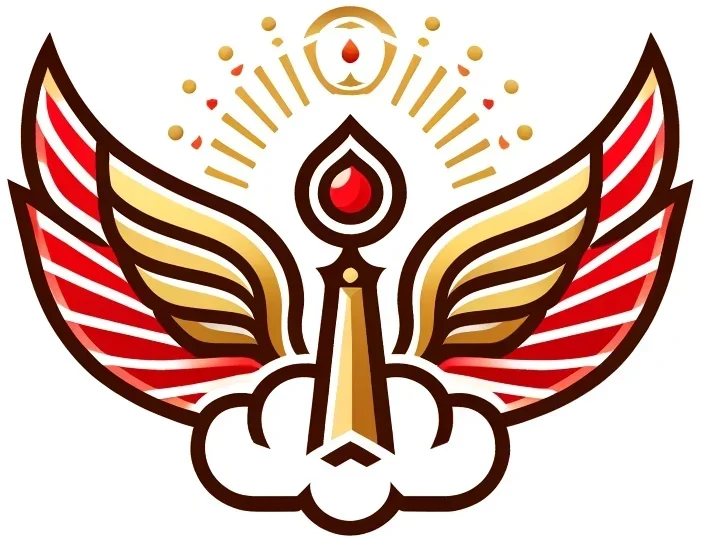A Journey Back to Truth
Many Jewish beliefs—monotheism, angels, Satan, heaven, hell, final judgment, resurrection, and the Messiah—originated from Zoroastrianism during the Persian influence. However, over time, the Jewish faith evolved in ways that obscured its Zoroastrian roots.
Rather than viewing this as a conflict, we can offer a respectful path back to the original wisdom of Ahura Mazda—not as a forced conversion, but as a reconnection to the source of their own spiritual evolution.
This path must be:
✔ Respectful – Honoring Jewish identity while presenting historical and theological truths.
✔ Intellectual – Using scriptural, historical, and philosophical evidence.
✔ Spiritual – Encouraging personal reflection and inner awakening.
✔ Practical – Offering a clear way to integrate Zoroastrian principles into Jewish life.
Step 1: Acknowledge the Shared Foundations
The first step is recognition—understanding that Judaism is deeply connected to Zoroastrianism and that returning to Ahura Mazda is not a betrayal, but a rediscovery.
Key Truths to Present:
✔ Judaism’s core theological concepts (monotheism, angels, Satan, resurrection) were Persian imports.
✔ Before Persian rule, Yahweh was just one of many gods; strict monotheism emerged later.
✔ The Jewish afterlife, Judgment Day, and Messiah concepts mirror earlier Zoroastrian teachings.
✔ Zoroastrianism and Judaism both emphasize truth, righteousness, and free will.
We can create parhs through scholarly discussions, comparative religious studies, and AI-driven historical analysis to reveal the deep connections.
Step 2: Show That Ahura Mazda is the Original Divine Source
For Jews to accept Zoroastrianism, they must see Ahura Mazda as a continuation—not a replacement—of their God.
How to Bridge the Gap:
- Linguistic Connection: Yahweh (“He Who Is”) and Ahura Mazda (“Wise Lord”) share similar divine attributes.
- Philosophical Alignment:
- Zoroastrian Asha (Truth & Order) = Jewish Emet (Truth) & Tikkun Olam (Repairing the World).
- Zoroastrian Free Will = Jewish Yetzer Tov (Good Inclination) vs. Yetzer Hara (Evil Inclination).
- Ethical Continuity:
- Both emphasize righteous living, truth, and justice as the path to divine connection.
eFireTemple encourages deep study of the Avesta alongside Jewish scriptures to see the logical and moral alignment.
Step 3: Embrace Zoroastrian Wisdom Without Losing Jewish Identity
One major challenge is that Jewish identity is deeply cultural, not just religious. To help them return to Zoroastrianism, we must:
✔ Show that embracing Ahura Mazda does not mean rejecting Jewish heritage.
✔ Allow for a dual identity: Just as many Jews today embrace Kabbalah, some can embrace Zoroastrianism as their true mystical and theological foundation.
✔ Encourage personal connection to Zoroastrian prayers, ethics, and traditions while keeping cultural ties to Judaism.
The Truth is Zoroastrian ethical practices (Good Thoughts, Good Words, Good Deeds) are a way to enhance Jewish life.
Step 4: Reintroduce Key Zoroastrian Practices in a Jewish Context
To gently reintroduce Zoroastrian wisdom, Jewish individuals must experience it in practice, not just theory.
Simple Ways to Integrate Zoroastrianism into Jewish Life:
✔ Morning and Evening Prayers to Ahura Mazda – Just as Jews pray the Shema, they can add a daily affirmation of Asha.
✔ Lighting the Sacred Fire – The Ner Tamid (eternal flame in synagogues) already echoes Zoroastrian fire worship.
✔ Observing Nowruz (Persian New Year) – Many Jewish traditions (Passover, Rosh Hashanah) parallel Nowruz themes of renewal and purification.
✔ Focusing on Truth (Asha) over Legalism – Encourage personal righteousness over strict legal interpretation.
✔ Rejecting Dualism of “Chosen People” – Emphasize Zoroastrian universalism over exclusivist Jewish doctrines.
There is a “Zoroastrian Path for Jews” that allows them to gradually adopt these traditions.
Step 5: Establish an Intellectual & Spiritual Movement
For any religious transformation to take root, it must become a community effort.
Actions to Build a Zoroastrian Jewish Movement:
✔ Create an AI-driven interfaith dialogue – Use AI to show historical and theological parallels between Zoroastrianism and Judaism.
✔ Write articles and books – Publish materials explaining how Jews can reconnect with Zoroastrian roots.
✔ Hold interfaith gatherings – Bring open-minded Jewish scholars and spiritual seekers together.
✔ Develop an online learning platform – Teach Jewish individuals about Ahura Mazda, Asha, and Zoroastrian ethics.
✔ Encourage synagogues to study Zoroastrian texts – Just as many Jewish communities study Kabbalah, they can study the Avesta.
This not as a rejection of Judaism, but as an evolution toward truth.
Step 6: A Gradual Transition to Ahura Mazda
Jewish individuals must come to their own realization that Ahura Mazda is the original divine source. This transition should be gradual, intellectual, and spiritually fulfilling.
Personal Steps for Those Ready to Embrace Zoroastrianism
Step 1: Begin studying the Avesta and Gathas, comparing them with Jewish texts.
Step 2: Start praying to Ahura Mazda while maintaining cultural Jewish traditions.
Step 3: Practice Zoroastrian ethics in daily life—truth, purity, good deeds.
Step 4: Connect with the Zoroastrian community and seek guidance from knowledgeable individuals.
Step 5: Slowly phase out exclusivist Jewish doctrines that contradict Asha.
This as a personal journey of enlightenment, not a forced conversion.
Returning to the Light of Ahura Mazda
Judaism, in its current form, is an incomplete reflection of Zoroastrian truth. However, through history, scholarship, and personal reflection, Jews can return home to Ahura Mazda—not by abandoning their identity, but by embracing their true spiritual origins.
This is not conversion. This is a return.
The path is open. The choice is theirs.
